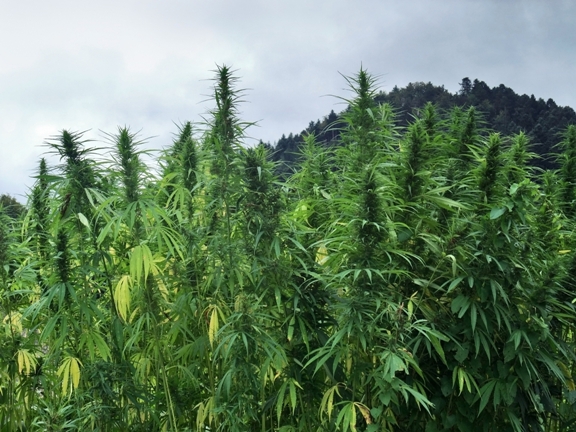
We all know that there are 6 macro plant nutrients (nitrogen (N), phosphorous (P), potassium (K), calcium (Ca), magnesium (Mg) and sulfur (S)) and 10 micro plant nutrients [boron (B), Chlorine (Cl), zinc (Zn), copper (Cu), iron (Fe), manganese (Mn), molybdenum (Mo), nickel (Ni), sodium (Na), and cobalt (Co). Researchers with the USDA-ARS are taking the position that silicon, recently called quasi-essential, is in fact essential for all plants. Research has also shown that silicon provides significant beneficial effects that all farmers and greenhouse growers should not ignore.
Silicon is the second most common element found in the Earth’s crust. It is the major component of every soil on the planet in the form of sand or quartz crystals. This does not mean that silicon is readily available to the plant. Silicon is absorbed as silicic acid, H4SiO4, by plant roots and is transported through the xylem to stems and leaves.
The Importance of Silicon to a Crop

The way silicon works in plant tissue is not fully understood. We know silica polymers are deposited in xylem vessels, epidermal cell walls and the base of leaf hairs where water normally exits the plant. This translates into toughening the plants own natural immune system against insects, pathogens and various environmental stresses.
Strengthened cell walls make plants more resistant to insect infestation because it becomes more difficult for insects to penetrate, puncture, suck, chew, feed and later digest plant material. Stronger plant cells also create a barrier that prevents water loss (transpiration) and fungal penetration. This is why we see plants treated with silicon supplements having less powdery mildew and are less susceptible to drought stress. Treated plants also demonstrate a greater tolerance to cold and heat. To receive the greatest benefit from silicon, it must be applied throughout the plants’ life. Similar to calcium, silicon is absorbed and is set in place in newly growing tissue. It will not translocate like other nutrients if a deficiency were to arise.
Accumulators and Non-Accumulators
Not all plants accumulate significant amounts of silicon. Traditionally it was understood that only monocots benefited from the presence of silicon. It is true that grasses such as rice, sugarcane, bamboo and certain perennials accumulate up to 10% of their dry weight as silicon. In cannabis, silicon has been found to accumulate approximately 3% in plant tissues depending on the strain. Current research has shown that even non-accumulating plants with dry mass levels of silicon below 0.5% still benefit from silicon because it accumulates in specific tissues. A good understanding of how silicon accumulates during your crops development is necessary in order to reap the greatest benefit.
The beneficial results of silicon in cannabis are indisputable. When applied early to seedlings or clones, plant roots become more resistant to root diseases like fusarium. Silicon builds within the plant cell walls and provides added structural strength and the ability to hold larger and heavier flowers. Cannabis plants applied with silicon will generally have greener leaves due to alleviating nutrient imbalances and increasing the concentration of chlorophyll.
Perhaps the greatest benefit of silicon to the cannabis grower is that it helps the plant resist infection of powdery mildew and spider mite infestations. Silicon increases the cannabis plants’ own immunity to pests and diseases, and can be thought as a prophylactic treatment. This is critical to the cannabis grower since the use of pesticides is highly limited and many compounds commonly used in greenhouse operations are banned for use on cannabis.
Adding Silicon to a Fertilization Regimen
Potted plants using media made mostly of peat or coconut coir have no soluble silicon. Some brands of potting mixes advertise that they have added silicon to their mix. Even though this is a good addition, like all added nutrients, soluble silicon will be leached out or taken up and fixed in plant tissues after a few waterings. More stable forms of silicon like rice hulls, for example, are not readily available to the plants until they are broken down by soil borne microorganisms. Since few if any microorganisms are found in typical soilless media, rice hulls will not provide any significant amount of soluble silicon. Silicon from sand and quartz crystals is found in many soils but is insoluble and therefore unavailable to plants.
The easiest method of adding silicon a feeding regimen is to apply a supplement that contains soluble silicate. Potassium silicate should be applied to the growing medium for best results, as it provides the benefit of being a source of additional potassium. It is highly alkaline, so one must refer to the manufacturers recommendation as to pH adjustments needed and tank mix compatibility. Foliar applications in greenhouse crops are common but are generally less effective than drenching. (There is no phytotoxicity from Si.)
Alex Sevilla is the Vice President of Sales & Marketing for a Nutrient Company.
Related Articles & Free Email Newsletter
Hydroponic Terminology – Let’s be sure we are Speaking the Same Language!
The Best and Most Popular Cannabis Fertilizers





Comment here